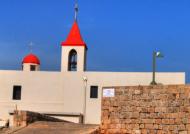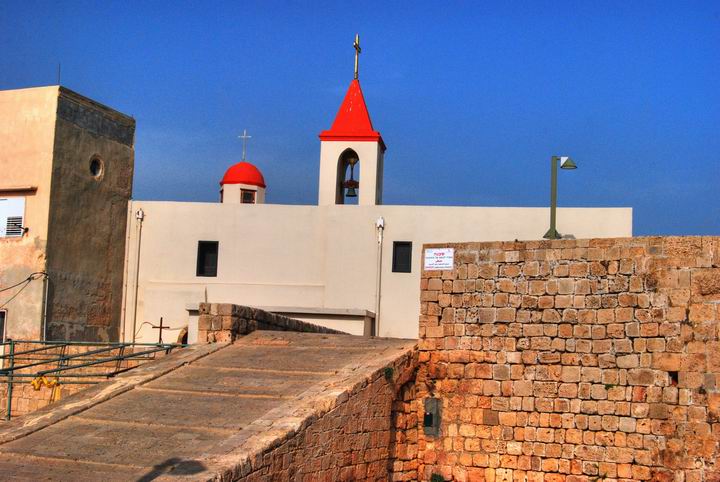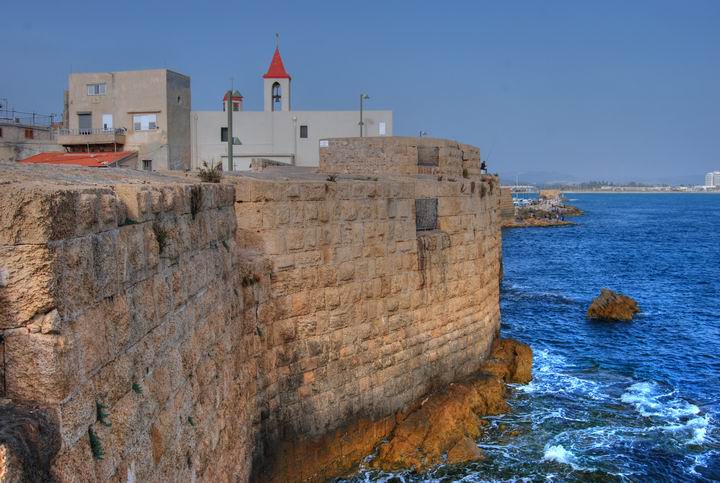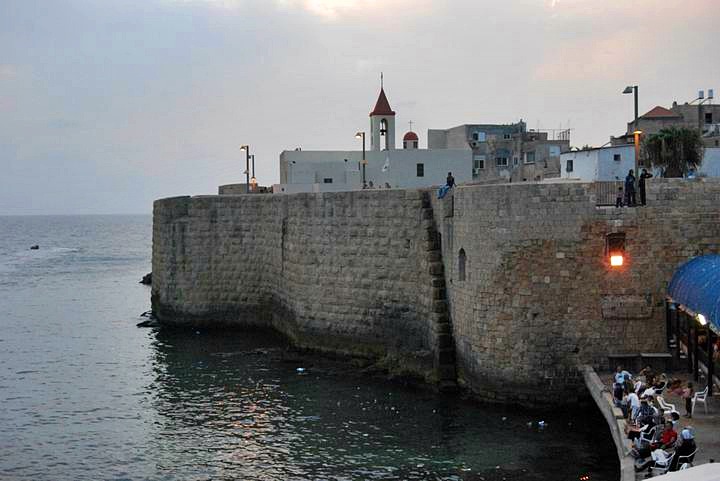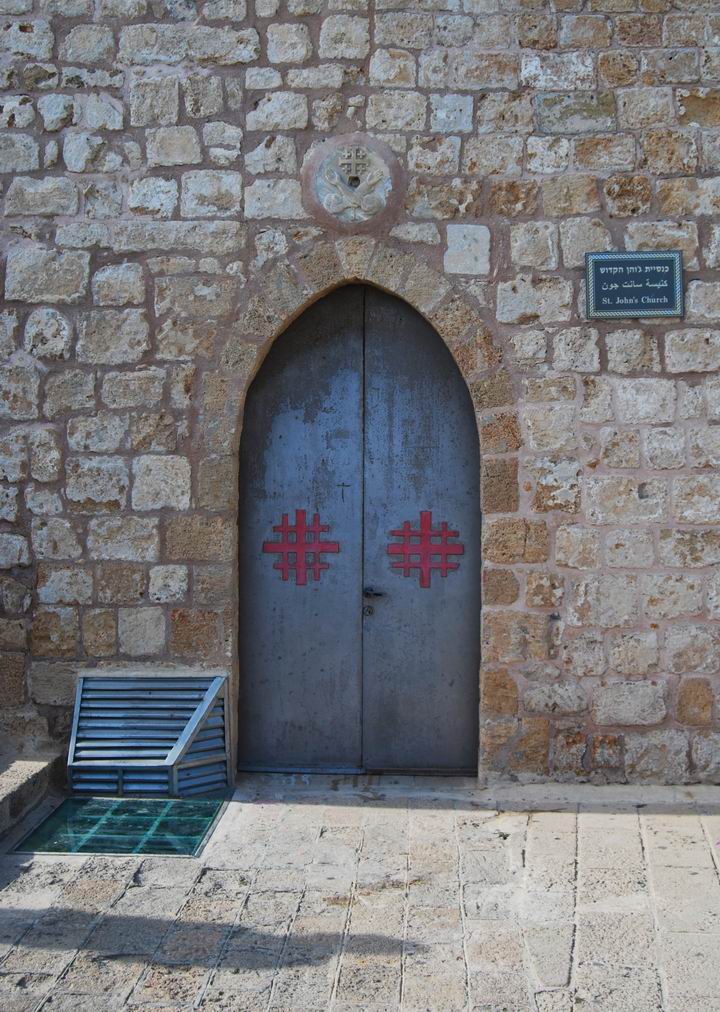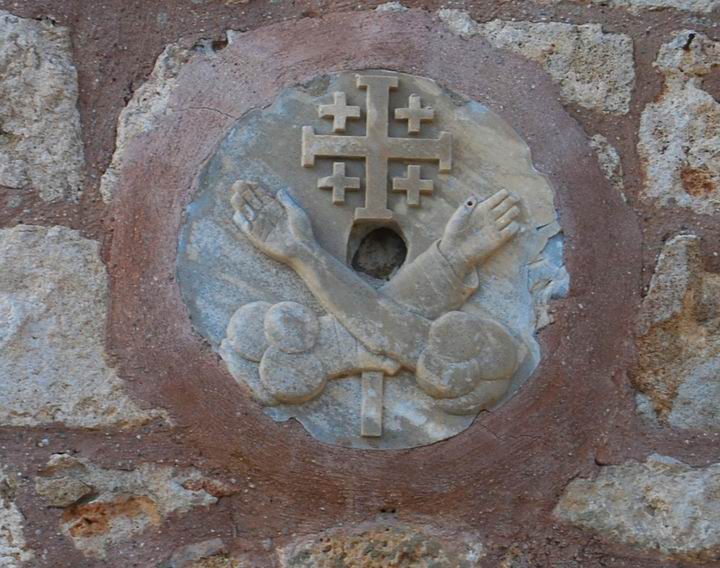An 18th Century Catholic church located on the southern side of the old city of Acre, which was built over the Templars earlier church.
Home > Sites > Acre > St. John Church
Contents:
Background
Location
History
Photos
* West View
* East view
* South view
* North view
* Interior
Background:
This Catholic church, built in 1737, is located on the southern side of the old city of Acre. It was built over the ruins of the 12th Century Crusaders church (St. Andrews) which was part of the Templars fortress complex.
Location:
St. John church is located on the south side of the old city, adjacent to the walls and close to the lighthouse on the south-east corner. It can be approached by walking along the southern walls promenade which towers above the church, or by walking in from the street level (through Ha-Haganah street to Salah & Bazri street).
Note that an early 12thcentury church, also called St. John, was located south of the Hospitaler’s fortress (named today as the Knights halls).
History of the place:
- Crusaders – Templars
The Templar Knights military-religious organization was established in 1118, and named their organization after the temple: the guards of the temple. Their task, as defined by the pope, was to protect the pilgrims and patients that visited the Holy Land.
The Crusaders were driven out from Jerusalem by Saladin in 1187. The Templars retreated to Acre – the Crusaders last stronghold in the Holy Land – and built their central fortress and palace on the south-west side. The fortress, now gone, was protected by mighty walls and four towers. They also built a church, called St. Andrews, in the current site of St. John. The Crusaders church existed until the 17th C.
The Templars also cut a 350M wide tunnel under the rock from the fortress to the south-west side of the city (read about it in the Templars tunnel page).
- Crusaders – Franciscans
The Franciscans, which many years later rebuilt the church, are a Christian order that was established by St. Francis in 1209. In 1342 Pope Clement VI declared that the Franciscans are the official custodians of the Holy places (“Custodia Terroe Sanctoe”). This custody is still in effect to date, and includes St. John.
- Mamluks
In 1291 the city was taken by the Mamlukes, and was completely destroyed – degrading Acre to a small neglected city until the end of the 18th century.
- Ottomans
The St. Andrews church existed until the 17th century. A new St. Andrews church was constructed in the 18th Century in another Templars location, not far away (at Philippe Auguste street, north of the Templars tunnel). The new church is a Greek-Orthodox church.
In 1737 a Franciscan-Catholic church was built over the ruins of the old St. Andrews, and renamed St. John (after John the baptist). It stands until today.
Photos:
(a) View from the west:
View from the west, near the lighthouse. The ramp is part of the path along the southern walls – a recommended tour with the best views of Acre.
Another view from the lighthouse, with the southern walls of Acre.
(b) View from the east:
View from the east, from the south walls.
An evening view from the east, from the Pisan port.
(c) View from the south:
View of an entrance to the church from the south side – facing the sea.
A detail of the seal above the door. The upper side is the 5-cross symbol of the Franciscans: large cross with four crosses on each of its corners. This symbol was the Crusaders sign of Jerusalem, and was adapted by the Franciscans. The 5-cross symbol is based on the 5 Holy wounds of the crucifixion of Jesus (2 in the hands, 2 in the legs, and one in the chest).
Below the five crosses are two hands on both sides of a cross – the symbol of the custody of the Holy places. The bare hand is the hand of Jesus, while the hand with a sleeve is St. Francis of Assisi, the founder. Both hands are perforated – the holes created by nails (Jesus on the cross, St. Francis of stigmata).
(d) View from the North:
View of an entrance to the church from the north side – the old city side. A residence apartment is located behind the door, and there are steps that lead up to the church.
(e) Interior:
We will add interior photos in the future.
BibleWalks.com – walk with us through the sites of the Holy Land
Navigation bar:
Acre Citadel <<<–previous site—<<<All Sites>>>—next Acre site—>>> St. Andrews
This page was last updated on Apr 27, 2008
Sponsored links:
